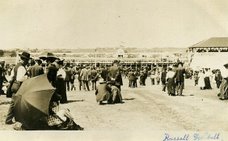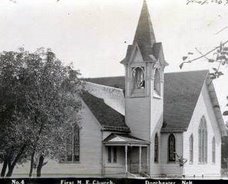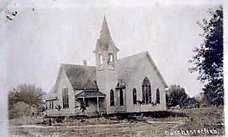 This article originally appeared in the Times on Jan. 9, 2009.
This article originally appeared in the Times on Jan. 9, 2009.In a recent editorial, we mentioned Dorchester has been able to escape school consolidation and loss of population -- both of which are crippling many small communities, including a few in our immediate area. But one look at Main Street reminds us that our community is not immune to the struggles facing Small Town America.
As we editorialized last year, now is the time for a "Vision 2015" plan that establishes some goals for Dorchester to improve the already-good quality of life we enjoy.
The most recent issue of VISIONS magazine, published by the non-profit Heartland Center for Leadership Development, lists 20 "clues to community survival" that were compiled following a case study of small towns that thrived even in the midst of the 1980s farm crisis.
We encourage of area resident to read the follow and recall them often:
CLUES TO COMMUNITY SURVIVAL
1.) Evidence of Community Pride. ("Successful communities are often showplaces of care, attention, history and heritage," the study says.)
2.) Emphasis on Quality in Business & Community Life.
3.) Willingness to Invest in the Future. ("In addition to the brick-and-mortar investments, all decisions are made with an outlook on the future.")
4.) Participatory Approach to Community Decision Making. ("Even the most powerful opinion leaders seem to work toward building consensus.")
5.) Cooperative Community Spirit.
6.) Realistic Appraisal of Future Opportunities. ("Successful communities have learned how to build on strengths and minimize weaknesses.")
7.) Awareness of Competitive Positioning. ("Local loyalty is emphasized in successful small towns, but thriving communities know who their local competitors are and position themselves accordingly.")
8.) Active Economic Development Program. ("There is an organized, public/private approach to economic development.")
9.) Knowledge of the Physical Environment. ("Relative location and available natural resources underscore decision-making.")
10.) Deliberate Transition of Power to a Younger Generation of Leaders. ("People under 40 regularly hold key positions in civic and business affairs in strong communities.")
11.) Celebration of Diversity in Leadership. ("Women, young people, and newcomers are elected officials, business leaders, and entrepreneurial developers.")
12.) Strong Belief in and Support for Education.
13.) Problem-Solving Approach to Providing Health Care and Housing Older Residents.
14.) Strong Multi-Generational Family Orientation. ("The definition of family is broad, and activities include younger as well as older generations.")
15.) Strong Presence of Traditional Institutions that are Integral to Community Life. ("Churches, schools and service clubs are strong influences on community development and the social network.")
16.) Sound and Well-Maintained Infrastructure. ("Leaders work to maintain streets, Main Street buildings, water systems and sewage facilities.")
17.) Careful Use of Fiscal Resources.
18.) Sophisticated Use of Technology Resources.
19.) Willingness to Seek Help from the Outside. ("People seek outside help for community needs, and many compete for government grants and contracts for projects and services.")
20.) Conviction That, in the Long Run, You Must Do It Yourself. ("Thriving rural communities believe their destiny is in their own hands. Making their communities good places is a pro-active assignment, and they are willing to accept it.")


















































No comments:
Post a Comment
Village Dweller checks all reader comments to determine if they are appropriate for print.